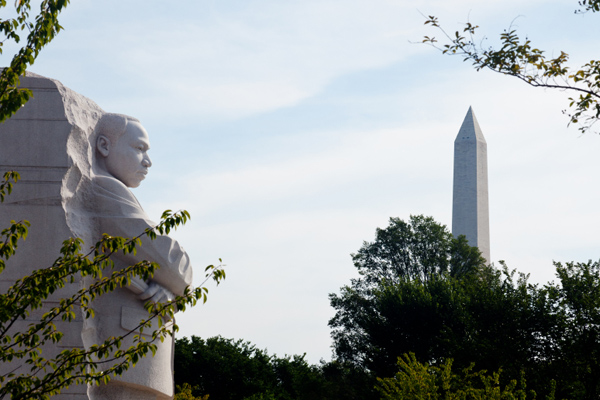3Qs: 50 years after ‘I Have a Dream’

Wednesday marks the 50th anniversary of Dr. Martin Luther King’s “I Have a Dream” speech and the March on Washington for Jobs and Freedom, iconic moments of the civil rights movement. We asked Robert Hall, associate professor and interim chair of the Department of African-American Studies, to reflect on these events and how far civil rights issues have progressed since in America.
When you reflect on King’s speech and the March on Washington, what stands out to you most, 50 years later?
It was a crescendo in the civil rights movement, which in the following years brought about the Civil Rights Act of 1964 and the Voting Rights Act of 1965. There was great symbolic and substantive value particularly in the March on Washington for Jobs and Freedom and the “I Have a Dream” speech still inspires people to this day. There’s something to be said for that. In the commemorative march and events that just took place in Washington last week, people were focusing on voting rights, the criminal justice system, and economic equality.
However, many struggles and tragic events still followed King’s speech and the march. In the months that followed came the church bombing Birmingham, Ala., in which four girls died, and assassinations of President John F. Kennedy and civil rights activist Medgar Evars. It’s important to note that black women were largely excluded from the speeches of that day in 1963.
This 50th anniversary also comes shortly after the Supreme Court’s decision in June to remove a requirement for certain states to obtain federal “preclearance” before changing voting laws. This ruling led some states to implement new voter I.D. laws, actions which many, including myself, have considered to violate both the spirit and the intent of the Voting Rights Act. So overall, it’s been a mixed bag.
What’s your take on how far civil rights issues in America have come since those events?
Great progress has occurred in certain areas. I was born and raised in the segregated South in Tallahassee, Fla. Some of the changes were night and day, as if a light switch was turned on. We had desegregation in many public places, more men and women came to be elected to public office at both the local and national levels, and opportunities for African-American students to attend more colleges and universities increased. As more African-Americans received college degrees, there became greater occupational diversity and a growing black middle class; however there remains a disproportionate percentage of African-Americans who fall below the federal poverty line compared to whites. Since the 1970s, there’s also been an internal migration of sorts, in which more African-American families who moved north have returned to the South to seek education and job opportunities.
Yet there are other areas where progress is not so obvious. One is primary and secondary public education; it turned out that mere desegregation was not enough to guarantee improved quality across all schools. Blacks also still face chronic disparities in employment rates compared to whites, particularly in urban areas.
What lessons can Americans today learn from reflecting on these events of 50 years ago?
Well, one is that mobilization of advocates on certain issues can be a very effective tool. The group that organized the March on Washington in 1963 included not only civil rights organizations but also the American Jewish Committee and representatives from the AFL-CIO. It was the product of a multi-racial coalition. Today, it’s clear that African-Americans cannot accomplish goals at the national level without having allies.
Another lesson relates to a sign of progress I mentioned earlier, that between the mid 1960s and the present there has been an exponential increase in the number of elected officials who are African-American. That change was shored up by the enforcement of the Voting Rights Act of 1965. When voting rights are acquired, these mobilization techniques are required at the local level to encourage a diverse candidate pool and get out the vote. It will be interesting to see what impact the Supreme Court’s recent ruling will have. It may not have as devastating an effect as some have argued, but it seems to me there is very little evidence that there’s been a massive pattern of voter fraud that would necessitate or justify the new types of laws that are being put in place.






